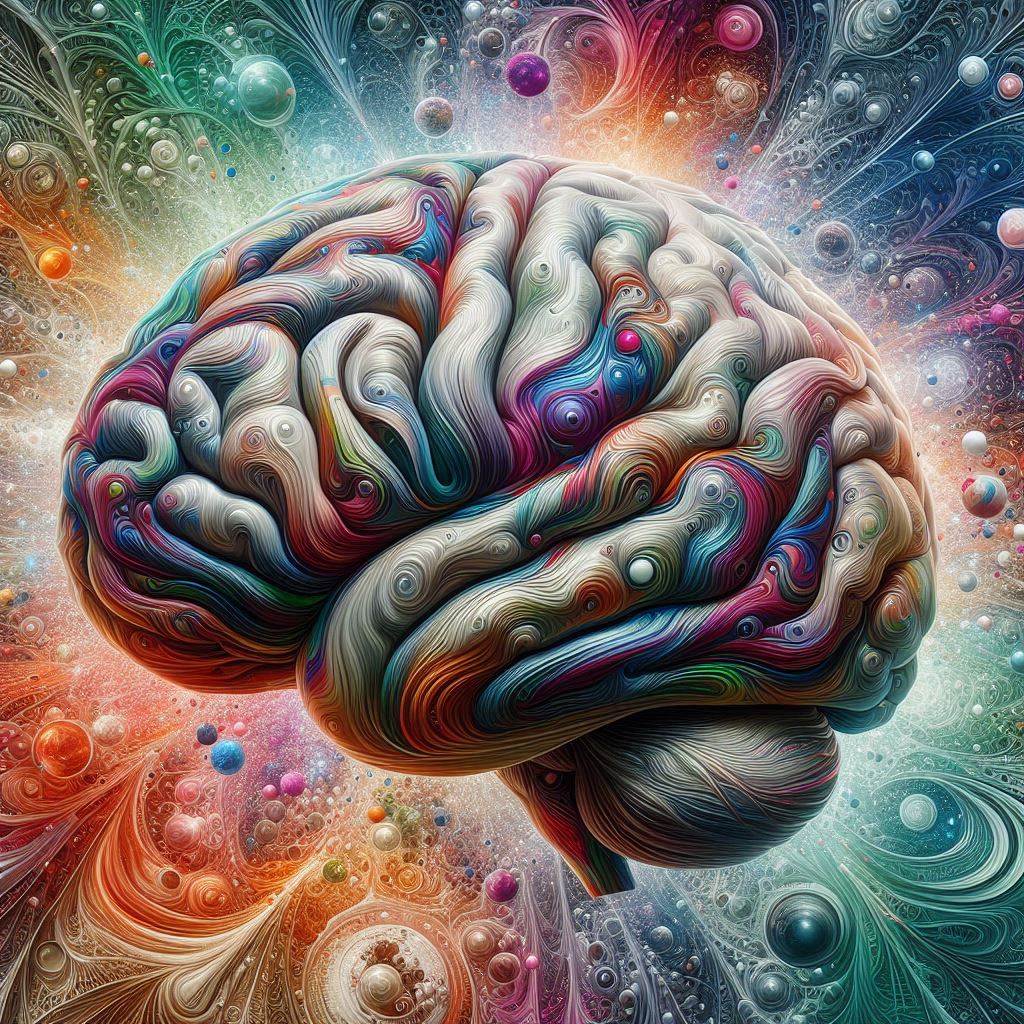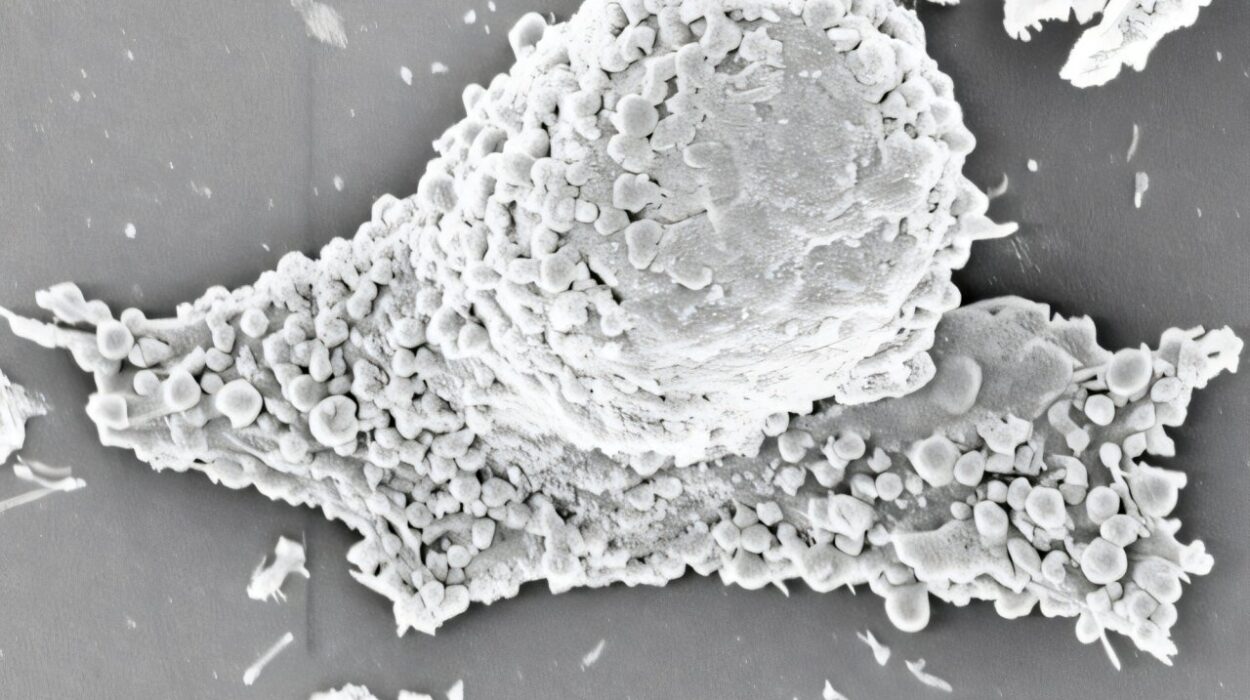A fascinating new study led by researchers from University College London (UCL) has shed light on the intricate mechanisms within the brain that help us separate reality from imagination. This breakthrough, published in Neuron, uncovers the role of the fusiform gyrus, a region located behind the temples in the temporal lobe of the brain, in helping us differentiate between what is real and what is imagined. The findings could have profound implications for understanding mental health conditions like schizophrenia and might even influence the development of new virtual reality technologies.
The fusiform gyrus, which is primarily associated with visual processing, has long been known to help us recognize faces and objects. However, this study offers new insights into its broader role, specifically in how the brain determines whether what we are perceiving is from the external world or a creation of our minds. This research opens a new chapter in understanding the cognitive processes that go awry in disorders that affect a person’s sense of reality.
The Cognitive Puzzle of Imagination vs. Reality
The ability to distinguish between real-world experiences and mental imagery is a crucial aspect of human cognition. Most of us take this ability for granted; however, for individuals with psychiatric conditions like schizophrenia, this line between what’s real and what’s imagined can blur. These conditions often lead to misperceptions, such as hallucinations, where individuals experience vivid images or sounds that feel as real as anything in the external world.
Dr. Nadine Dijkstra, the lead author of the study from the Department of Imaging Neuroscience at UCL, explained the significance of the findings. She likened the process to imagining an apple. “Imagine an apple in your mind’s eye as vividly as you can. During imagination, many of the same brain regions activate in the same manner as when you see a real apple,” she said. This blurring of lines between what we see and what we imagine has intrigued neuroscientists for years, and this study provides crucial insights into how the brain separates the two experiences.
The Experiment: Exploring the Mental Intersection of Vision and Imagination
To explore this phenomenon, the UCL researchers designed an experiment that involved 26 participants. These individuals were tasked with detecting a faint pattern on a screen, surrounded by a noisy background. The catch? The pattern wasn’t always present—only half of the time. Simultaneously, participants were instructed to imagine a pattern, which was either the same or different from the one they were attempting to detect. They were also asked to rate how vividly they could imagine the pattern.
The results were striking: when participants reported a highly vivid mental image, they were more likely to say that they saw the real pattern on the screen, even during trials when no pattern was presented at all. This was a clear indication that when participants imagined something vividly, they sometimes mistook their mental images for reality.
As participants performed these tasks, their brain activity was closely monitored using functional magnetic resonance imaging (fMRI), a technology that allows researchers to observe brain activity in real-time. The researchers were able to pinpoint the exact areas of the brain that were activated during the tasks.
The Role of the Fusiform Gyrus in Reality Perception
The researchers discovered that activity in the fusiform gyrus could predict whether participants judged an experience as real or imagined, regardless of whether the experience was actually real. When the fusiform gyrus showed heightened activity, participants were more likely to claim that the pattern they were trying to detect was indeed present, even if it was only a mental image.
This discovery has significant implications. The fusiform gyrus, which is typically associated with visual processing, seems to play a central role not only in recognizing faces and objects but also in distinguishing between external perception and internal imagery. Under normal conditions, this brain region’s activation is weaker during imagination than when perceiving real external objects. However, when participants imagined the pattern very vividly, the fusiform gyrus became highly active, leading them to confuse their imagination with actual visual perception.
The Collaboration of Brain Regions in Reality Discrimination
Beyond the fusiform gyrus, the study also revealed that other regions of the brain collaborate to help us discern reality from imagination. One such region is the anterior insula, located in the prefrontal cortex, which plays a key role in decision-making, emotional processing, and body awareness. The research found that activity in the anterior insula increased in tandem with the fusiform gyrus when participants mistakenly judged an imagined pattern to be real.
Professor Steve Fleming, senior author of the study and a professor at UCL’s Psychology & Language Sciences department, explained the significance of this finding. “These areas of the prefrontal cortex have previously been implicated in metacognition—the ability to think about our own thinking,” he said. “Our results indicate that the same brain areas are involved in deciding what is real.”
This collaborative activity between the fusiform gyrus and the anterior insula suggests that the brain uses a dynamic, interconnected network of regions to make judgments about reality. The anterior insula, in particular, helps guide decision-making when it comes to distinguishing between experiences generated internally (in our minds) and those originating from the outside world.
Implications for Mental Health
The findings of this study provide new insights into mental health conditions where individuals struggle to differentiate between reality and imagination, such as schizophrenia. People with schizophrenia often experience hallucinations—false perceptions that seem as real as anything in the physical world. This research could help scientists understand why the brain of a person with schizophrenia might fail to distinguish between imagined and real experiences, which could lead to improved diagnostic techniques and therapeutic approaches.
For example, the study suggests that abnormal functioning of the fusiform gyrus and its collaboration with the anterior insula might contribute to the cognitive disturbances seen in disorders like schizophrenia. By identifying these areas of the brain and understanding how they work together, researchers could potentially develop more effective treatments aimed at restoring the brain’s ability to properly separate imagination from reality.
Future Implications: Virtual Reality and Artificial Intelligence
While the study’s primary focus was on understanding how the brain differentiates between imagination and reality, the implications extend far beyond psychiatry. One potential area of application is virtual reality (VR) technology, which creates immersive environments that simulate reality. The findings from this study could inform the development of more realistic and engaging VR experiences by identifying when and how imagined experiences can feel real to the brain.
In fact, the research aligns with predictions made by a computer simulation developed by the team, which modeled how the brain distinguishes between internally generated experiences (such as imagination) and externally generated experiences (such as sensory perceptions). The simulation helped the researchers identify the fusiform gyrus and the anterior insula as key players in this process. Understanding these brain areas could also have applications in fields like artificial intelligence, where distinguishing between simulated and real experiences could be crucial for creating more sophisticated, human-like systems.
A New Frontier in Cognitive Neuroscience
This study represents a major leap forward in our understanding of the brain’s ability to distinguish between what is real and what is imagined. By identifying specific regions of the brain involved in this process, the researchers have opened the door to new possibilities in both the clinical and technological realms. From improving treatments for mental health conditions to advancing virtual reality and AI technologies, the impact of these findings is vast and multifaceted.
Dr. Dijkstra and her colleagues have taken an important step toward unraveling one of the brain’s most mysterious and crucial functions. Their work provides a clearer picture of how our minds navigate the complex terrain between reality and imagination—a distinction that, for most of us, seems so natural, but is, in fact, the product of sophisticated neural processes that are still being uncovered.
As research in this area continues, we may come to better understand not only how our brains tell the difference between what is real and what is imagined but also how that knowledge can be applied to enhance our lives, our technologies, and our understanding of the human mind.
Reference: A neural basis for distinguishing imagination from reality, Neuron (2025). DOI: 10.1016/j.neuron.2025.05.015. www.cell.com/neuron/fulltext/S0896-6273(25)00362-9






